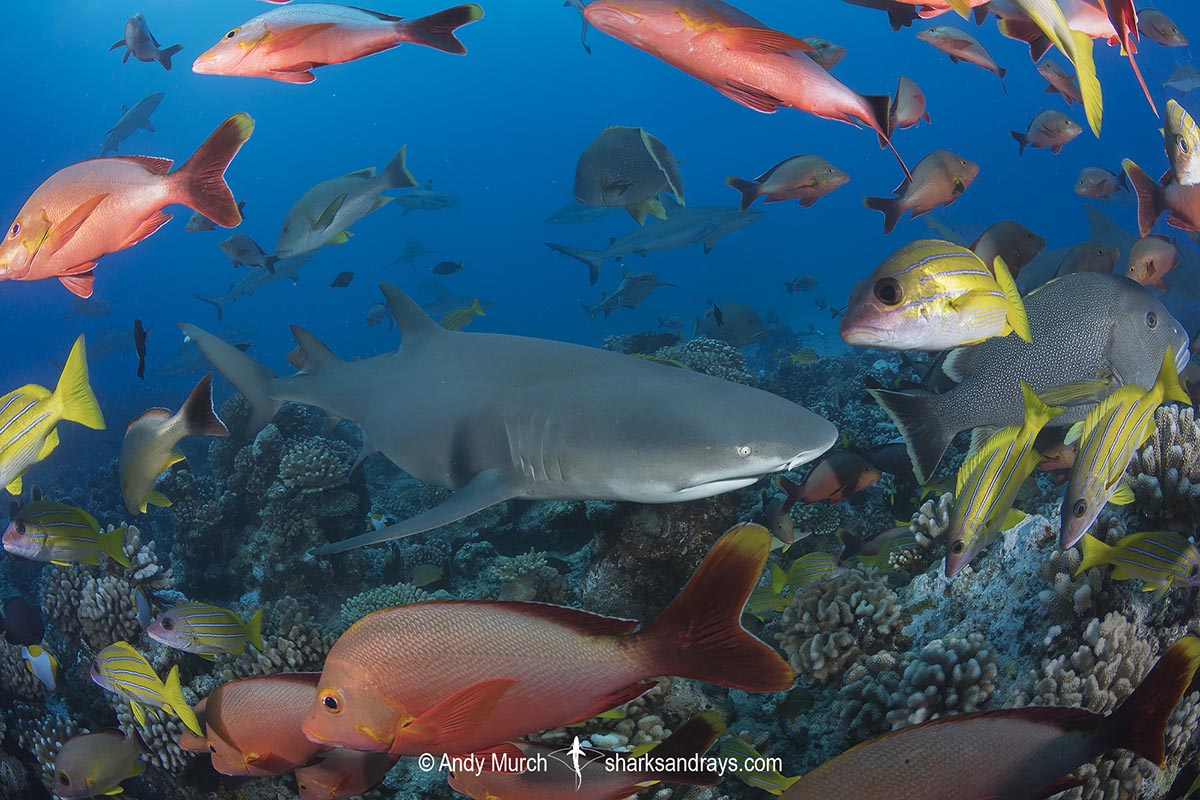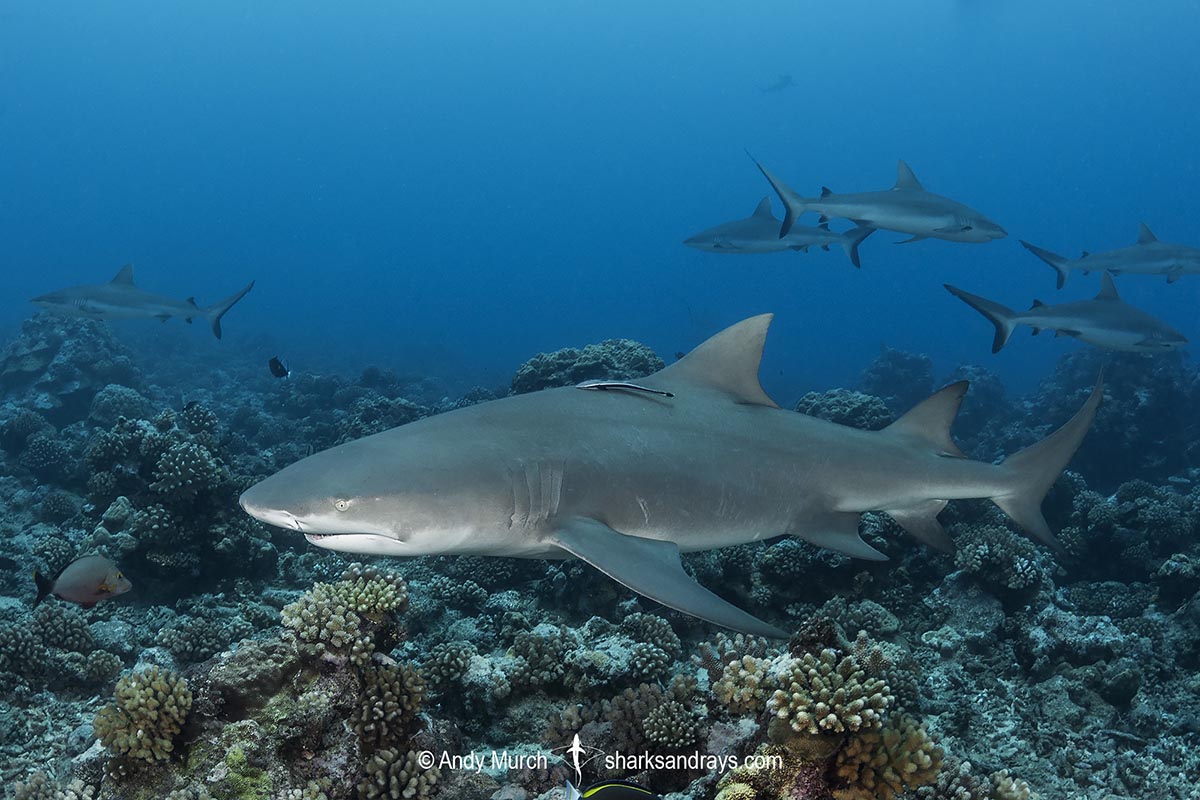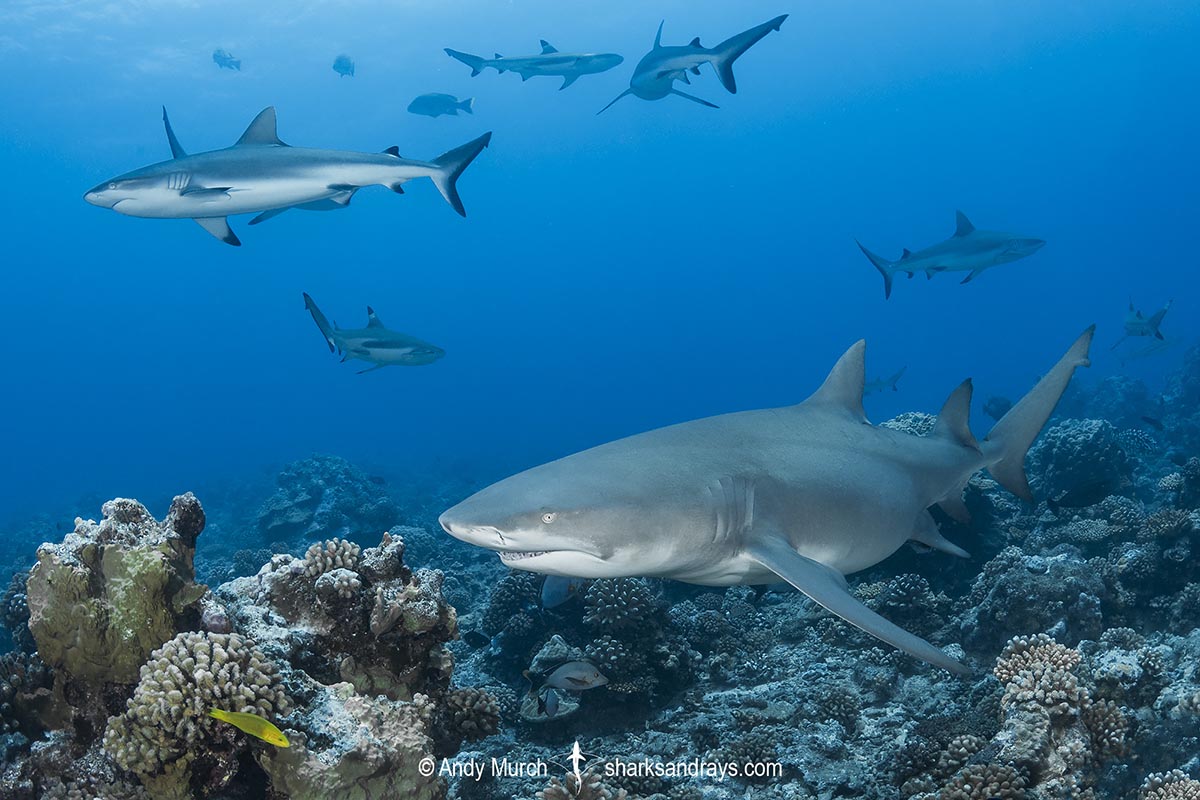Common names
Sharptooth Lemon Shark, Sicklefin Lemon Shark.
Binomial
Negaprion acutidens.
Synonyms
Apeionodon acutidens, Aprionodon acutidens, Aprionodon acutidens queenslandicus, Carcharias acutidens, Carcharias forskalii, Carcharias munzingeri, Eulamia odontaspis, Hemigaleops fosteri, Mystidens innominatus, Negaprion odontaspis, Negaprion queenslandicus, Odontaspis madagascariensis.
Identification
A large bodied shark with a short, rounded snout. Dorsal fins somewhat falcate with pointed tips. Second dorsal fin almost as large as first dorsal. Dorsal coloration yellowish-brown, or olive-brown. Ventral coloration white or cream. Black spot on snout tip. Fins may have dusky tips and posterior margins.
Size
Maximum length 310cm. Size at birth 45-80cm.

Conservation Status
ENDANGERED
The sharptooth lemon shark is targeted and bycatch through much of its range in longline, gillnet, handline, and trawl fisheries. It is also impacted by habitat degradation from climate change, destructive fishing practices, and poor water quality. In Australia and some South Pacific islands where protection measures prohibit fishing, this species remains locally abundant.
Limited species-specific data is available, but it is estimated that the Sharptooth Lemon Shark populations have declined by 50–79% over the last 50 years.

Habitat
Tropical/sub-tropical. Narrowtooth lemon sharks inhabit shallow coral reefs (within lagoons and around offshore reefs) and sand flats. Also found in mangrove estuaries. From the intertidal zone to at least 30m.
Distribution
The narrowtooth lemon shark is found in most coastal areas of the tropical Indian Ocean, Southeast Asia, tropical Australia, and the islands of the central Pacific.
Reproduction
A viviparous species with yolk-sac placenta. Up to 14 pups per litter. Gestation is approximately 10-11 months. Mating takes place biennially.
Diet
Lemon sharks mostly eat bony reef fishes and sharks and rays.
Behavior
Narrowtooth lemon sharks have a great degree of site fidelity. In an 1984 study, Stevens tagged and released 143 lemons at 43 sites. Of the 19 sharks that were recaptured later in the study, 91% were within 2km of their previous location.
Reaction to divers
Usually shy around divers unless baited.
Diving logistics
Sharptooth lemon sharks are occasionally seen at sites throughout their range, but the majority of sightings (by divers) take place around remote islands in the south or central Pacific.
In Fiji’s Beqa Lagoon, baited dives often attract lemon sharks. The feeds are dominated by aggressive bull sharks but the lemons sometimes mix with them or are seen at other sites in the area.
Previously, baited dives in French Polynesia presented excellent opportunities to get close to sharptooth lemons, but shark feeds have now been banned throughout the country. However, due to their site fidelity, lemons are still seen at sites where the feeds took place in Bora Bora, Moorea, and Tahiti.
Sharptooth lemons are also regularly seen by snorkelers, on the reefs surrounding Heron Island on the east coast of Australia.
Similar species
Lemon Shark Extremely similar but this species range does not overlap with the sharptooth lemon shark. It can be distinguished by its more rounded fin tips, and lack of black spot on the tip of its snout.
Sandtiger Shark Similar coloration and fin sizes but easily distinguished by its pointed snout and permanently exposed pointed teeth.







